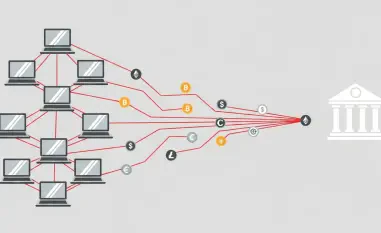In a chilling development within the digital underworld, a formidable new cybercriminal alliance has surfaced, blending the notorious talents of Scattered Spider, ShinyHunters, and LAPSUS$ into a unified force known as Scattered LAPSUS$ Hunters (SLH). This coalition, far from a fleeting partnership, represents a calculated merger designed to escalate their influence across the cybercrime landscape. With a focus on extortion-as-a-service (EaaS), a centralized operational hub, and a brazen public presence, SLH is redefining how criminal groups operate in an era of heightened law enforcement scrutiny. Their emergence signals a shift toward more structured and persistent threats, raising alarms among cybersecurity experts who see this as a potential blueprint for future data extortion schemes. As this alliance leverages the combined reputational capital of its predecessors, the implications for global security are profound, demanding close attention to their evolving tactics and strategies.
The Formation and Structure of a Cybercrime Powerhouse
Uniting Infamous Groups Under One Banner
The genesis of SLH marks a significant evolution in cybercriminal collaboration, as it brings together three high-profile entities—Scattered Spider, ShinyHunters, and LAPSUS$—into a singular, cohesive unit. Unlike earlier instances of temporary alliances, this group operates under a federated identity with a defined operational center and a clear focus on amplifying impact through extortion-based models. Reports from cybersecurity analysts indicate that this is not mere rebranding but a strategic consolidation aimed at maximizing both influence and profitability. The alliance has positioned itself as a dominant player in the underground network often referred to as The Com, capitalizing on the collapse of major marketplaces like BreachForums to attract displaced operators. This unification serves as a force multiplier, enhancing their ability to recruit talent and execute sophisticated campaigns that blend technical prowess with psychological intimidation, setting a dangerous precedent for the industry.
Core Operators and Their Strategic Roles
At the heart of SLH lies a tightly knit core of fewer than five key operators who manage an intricate web of around 30 personas, each with distinct responsibilities. Among them, a ShinyHunters-linked identity known as “shinycorp” emerges as the central coordinator, orchestrating the group’s overarching strategy. Other notable figures include “yuka,” tied to zero-day exploits and advanced malware development, alongside “alg0d,” who acts as a data broker and negotiator, and “SLSHsupport,” dedicated to maintaining channel persistence. This structure reveals a sophisticated blend of skills, from cutting-edge exploit creation to operational resilience, moving beyond unverified claims of ransomware deployment to confirmed technical capabilities. Such organization highlights how SLH prioritizes both efficiency and adaptability, ensuring that their operations remain robust despite external pressures from law enforcement and platform takedowns, positioning them as a uniquely enduring threat in the cybercrime ecosystem.
Operational Tactics and Future Implications
Leveraging Digital Platforms for Command and Control
A defining feature of SLH’s operations is their strategic use of Telegram as a central hub for communication, branding, and intimidation. Far beyond a simple messaging tool, the platform acts as a persistent stage for their public presence, where they project power and influence through theatrical tactics reminiscent of hacktivist groups. Despite frequent takedowns, the group has demonstrated remarkable resilience by rebuilding over 16 channels since mid-year, underscoring their commitment to visibility. This approach serves a dual purpose: maintaining operational continuity and cultivating an aura of invincibility that attracts potential affiliates. While financial gain remains the primary driver, as clarified by cybersecurity researchers, the emphasis on performance and perception suggests a deliberate effort to dominate the narrative within underground circles, making their activities harder to predict and counter for security professionals.
Shaping the Future of Data Extortion Trends
Looking ahead, SLH’s hybrid ecosystem of identity fluidity, social amplification, and growing exploitation capabilities poses a significant challenge to cybersecurity defenses. Analysts warn that this alliance could influence data extortion trends well into the coming years, potentially through 2026 and beyond, by formalizing an affiliate-driven model that capitalizes on their combined notoriety. Their ability to adapt and persist in a heavily monitored underground landscape reflects a broader shift toward long-term, cohesive criminal alliances. This trend demands a reevaluation of how threats are tracked and mitigated, as traditional disruption tactics may fall short against such structured entities. As a response, organizations must prioritize intelligence sharing and proactive measures to anticipate SLH’s next moves, while policymakers should consider stronger international cooperation to dismantle these networks. Reflecting on their rapid consolidation, it becomes evident that their sophisticated blend of technical skill and strategic branding has already reshaped the threat landscape, leaving a lasting impact on how cybercrime evolves.













